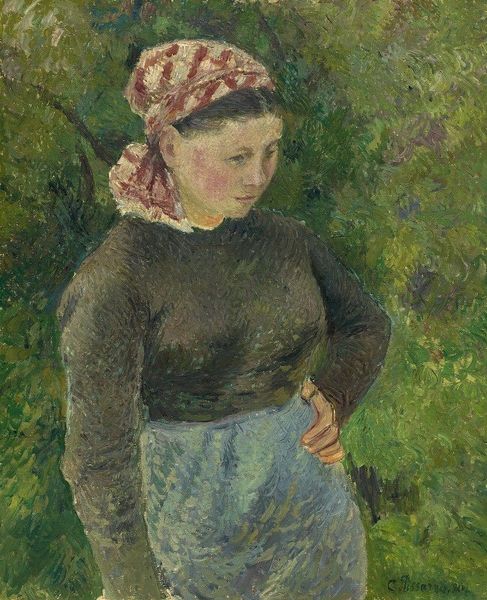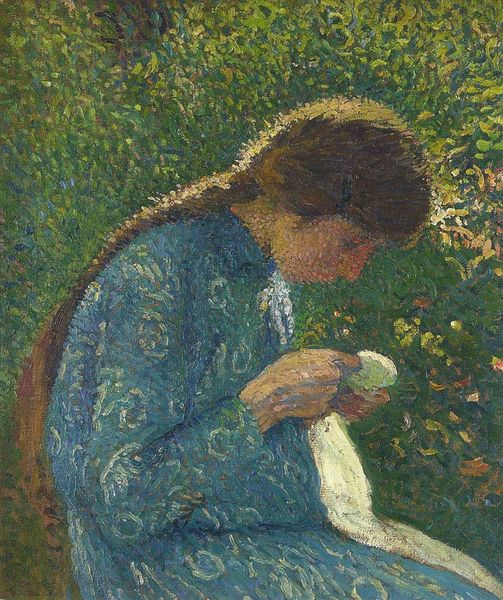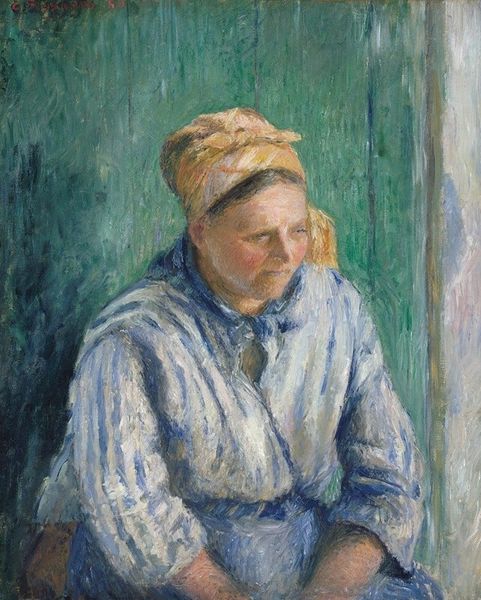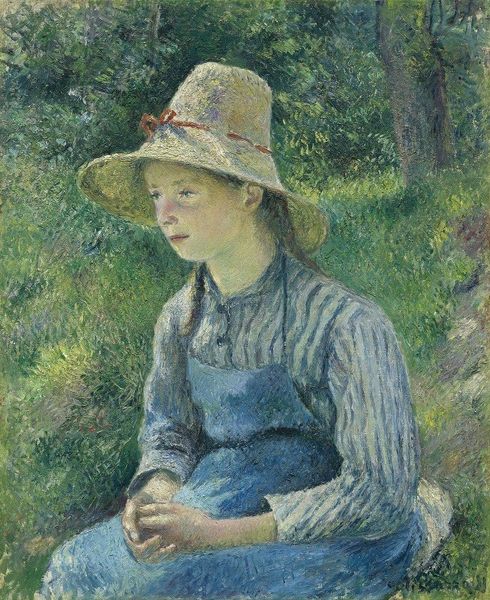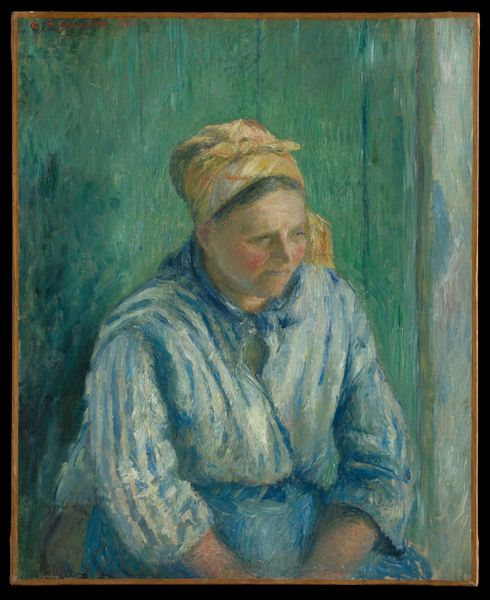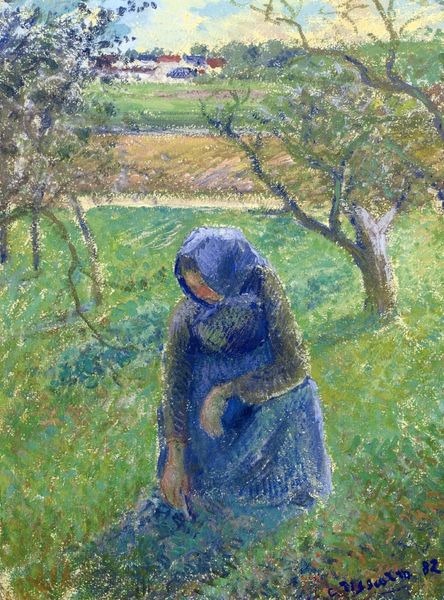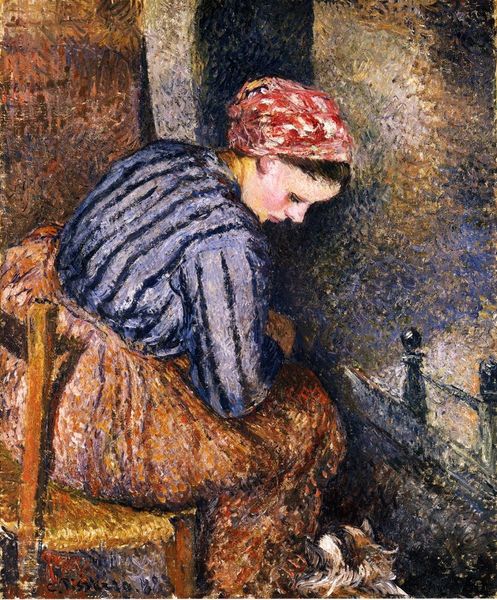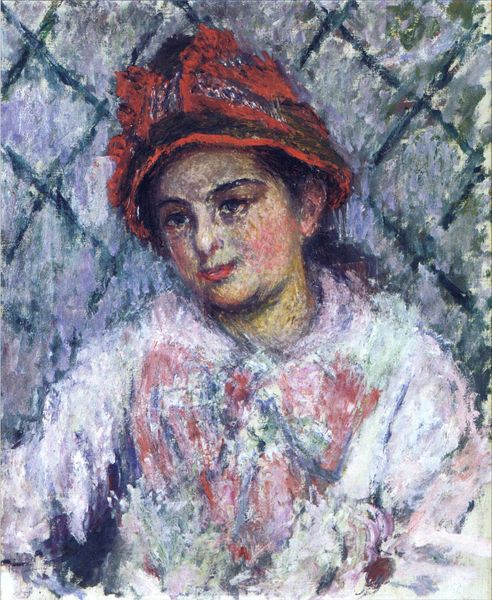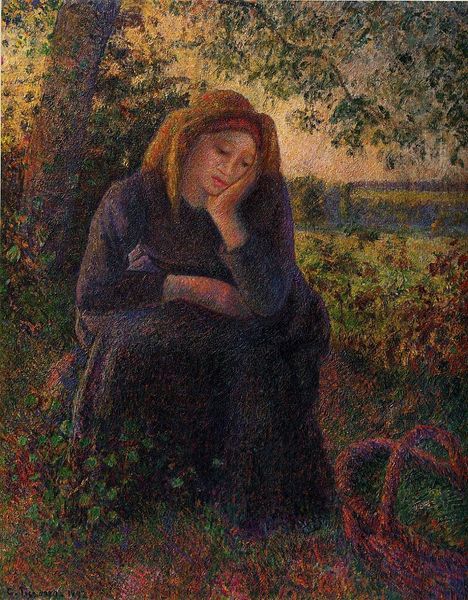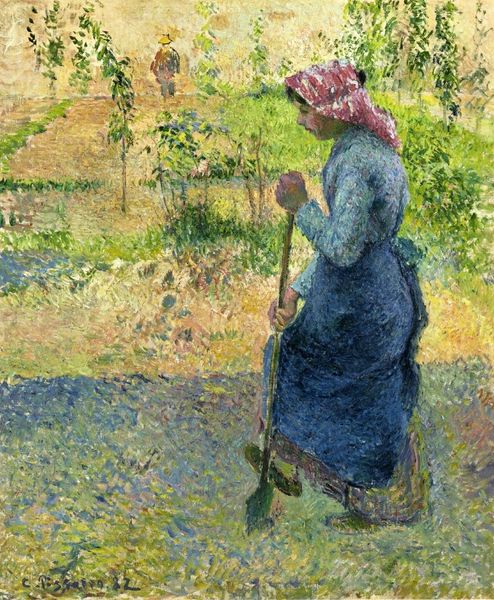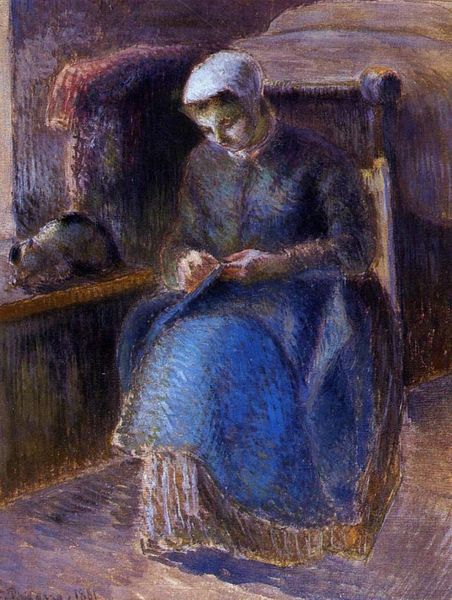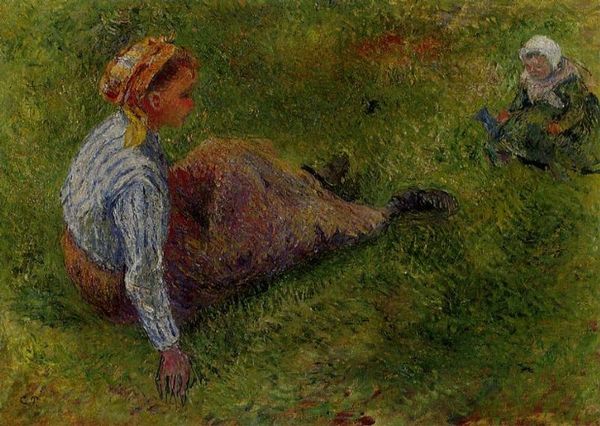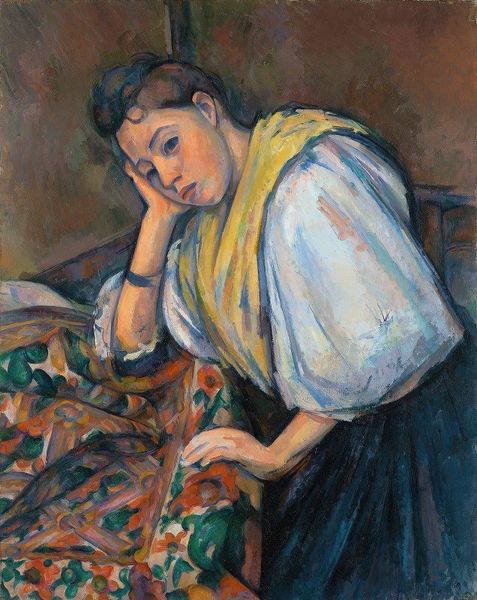
painting, oil-paint
#
portrait
#
figurative
#
painting
#
impressionism
#
oil-paint
#
oil painting
#
genre-painting
#
post-impressionism
#
portrait art
Copyright: Public Domain: Artvee
Curator: Camille Pissarro’s “A Seated Peasant Woman,” painted in 1885, presents a figure lost in thought, a woman connected to the land through her labor and her very posture. Editor: There’s a somber beauty to it, wouldn’t you say? The downward gaze, the muted palette—it speaks to a life of hardship, a world away from Parisian cafes and dancers. Curator: Absolutely. The painting's essence resides in the artist’s commitment to representing the unvarnished lives of rural laborers. Pissarro’s embrace of ordinary subjects reflects the growing social consciousness in art. He portrays her using visible brushstrokes. You see how the paint itself becomes almost like the soil she's connected to. Editor: Precisely. He eschews the smooth, idealized forms of academic painting, opting instead for a broken, tactile surface. This aligns perfectly with his anarchist politics. The rough application of the paint mimics the texture of roughspun cloth, the soil clinging to her boots, emphasizing the unglamorous realities of rural existence. I’d argue he wanted to reclaim dignity by revealing these laboring processes, and the consumption of art about them. Curator: I agree entirely. And observe her clothing. A practical, everyday garment, conveying her working identity. The red and white headscarf perhaps provides a glimmer of hope in her laborious existence, a simple adornment against a backdrop of earthy hues. There's such honesty. She isn't a symbol, she's a person, rendered with deep respect and even love. It is a testament to the fact that he used the Impressionist style to bring visibility to such rural ways of being. Editor: In some ways, Pissarro is elevating craft, labor, a way of life dismissed by the burgeoning bourgeois class of the period. Each daub of paint celebrates, in its own material way, her participation in the rural economy, in resistance of urban life and artistic subjects. Curator: Thinking about "A Seated Peasant Woman," it's interesting how a simple painting invites you into the quiet corners of history, prompting questions about value, labor, and art. Editor: Yes. Ultimately, by showing us the labor of her being and his, he offers a powerful meditation on art's capacity to bear witness, challenging traditional boundaries between representation and reality.
Comments
No comments
Be the first to comment and join the conversation on the ultimate creative platform.
